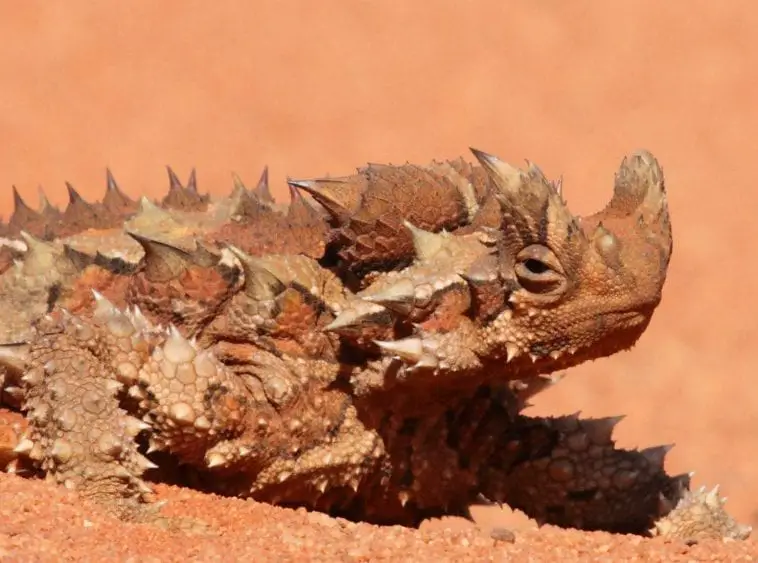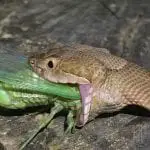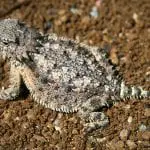Not all thorns are dangerous. Does this also apply to a Thorny Devil? The name of this reptile may make any potential reptile owner a scare. Are they safe for a pet? Let’s find out.
Introducing the Thorny Devil
Thorny Devils are commonly found in Australia, the oldest, and most geologically worn continent. If you are interested in reptiles, you may find some interesting varieties coming from Australia. One of them is the Thorny Devil.
This species is one of a monotypic genus that seems to hail from another planet. They have been discovered by scientists since 1841, with a scientific name Moloch horridus. This species is distributed widely in the arid regions of Australia, particularly the Northern Territory, South Australia, Western Australia, and Western Queensland.
The soil conditions and the area’s aridity are the major factors that determine where these animals live. Amidst the vast interior of Australia, thorny devils are found in long sand ridges and sandy plans, where there is an abundance of spinifex. Towards the southwest, they are also found in areas with short eucalyptus trees, as well as other shrubs, otherwise known locally as “mallee.”
Spiny Lizards
A lot of people say that almost every aspect of the appearance of a thorny devil is out of this world. As such, it has been said that this is the weirdest lizard they have seen. For one, elongated scales and long spines appear in every direction of their body. The edges of their spines are sharp, narrow, and smooth. In between these long-pointed and widely dispersed scales are areas of rhombic, small-sized scales that come in a variety of shapes.
What really defines this animal is its several rows of spines that extend down to the back from the neck towards the edge of its tail, well as on all of its limbs. Even on the belly surface, which may be relatively spineless, there are also sharp, short, and conical spines that are spread across the surface. Their head also features nostrils that are guarded against the top by a small conical spine. They also have a huge spine, with some smaller spines that protrude from above each of their eyes.
Their long neck is also filled with spines that are found directly at the back of their head, along with a well-scaled and broad structure that directly protrudes right above their neck. These structures come with stout conical spines, with one that projects to each side of the body. These lateral spines seem to mimic the similar spinal architecture of the horns that are right above their eyes.
Across their body are more than 10 rows of sharp spines that extend down the rest of their body. There is also a smaller number of rows between the upper parts of the hind legs, on the sides, which are as equally spiny, before going to the tip of the tail. The surface of their back is broken up visually, thrown into a whirl of color pattern, and more spines of different brightness. As a result, there is an appearance of having a bulk of shriveled and dried plant materials on top of the desert sands.
Patterns and Colors

When viewed up close, these animals can have a colorful and bright appearance, even though when viewed from afar, the colors copy the ones that are found in nature, allowing these reptiles to protect themselves from being detected easily.
An active lizard features a yellowish background color that is filled with bold and bright blotches of yellow, red, or brown, narrow black lines. These colors are specific to lizards that live on similarly colored varieties. There are broken white lines that go down the sides and middle parts of their back. This coloration and pattern help these lizards to disguise against potential attackers.
Another interesting thing about these thorny devils is their capability to perform a rapid color change, which is a natural ability that depends on the actual reaction of pigmented cells in their skin dermis. This, however, does not mean that they can change to any color or that their pattern changes according to their background.
During morning inactivity and at cooler temperatures, these thorny devils are uniquely dark, with their ground colors being greenish. Their body blotches look olive. There is a connection between the bright color of a lizard and the increase in activity and body temperature. Still, even a completely warmed devil at the height of the heat will quickly darken as they pass from sunlight to the shade of a small tree or shrub.
Thorny Devil Behavior

Knowing whether or not it is safe to keep a thorny devil also means the need to observe and understand its behavior. They are most likely to be found active on the ground surface in fall and spring, instead of during the midwinter and midsummer. During periods of inactivity, their movements are relatively short. They can also be found staying within the protective cover of some burrows or shrub complexes.
Male thorny devils are not necessarily territorial. However, during seasonal activity, individual lizards show some sharp differences in terms of movements and behaviors. In a certain study performed on thorny devils, they moved as little as a few yards within a day, while others move more. On average, males move twice as far as females, especially during the earlier part of spring.
It has been presumed that during these movements, males were looking for mating opportunities. Some lizards may appear to be sedentary, staying within a 100-yard radius from where they were found originally. Others moved as far as five miles in a period of 18 months. The reasons behind these patterns in the movement are still being studied.
Food and Diet

Thorny devils are described by other biologists as “sit-and-wait” predators. They love eating tiny ants, with diets that are restricted to these types of ants. As such, these lizards have the shortest menu of diet options. They are found feasting on the masses of some species of small ants, especially those from the genus Iridomyrmex. A thorny devil may also stand at the side or above an ant column while picking off passersby. They may also sit right at the base of a bush, eating ants along the way. Modern calculations done by scientists show that on the average, adult thorny devils eat about 750 ants every day.
Interesting Way to Drink
One of the most interesting discoveries made about the thorny devil is its drinking behavior. It was in 1923 when a report was made on the amazing hygroscopic nature of the skin of thorny devils. This means that these lizards drink through the walls of their body. The observation of the scientist shows that the skin of these lizards absorbs moisture similar to that of a blotting paper.
This capability of the thorny devil was questioned with some studies. However, some researchers suggest that the movement of water going up to the skin was caused by the capillary forces that were created by the adhesion of water to the tiny grooves right in the surface of the scales. They have also noted that this capability may afford the lizards to have a drink from sporadic showers or dew. Continued studies are conducted in this regard.
Avoiding Predation
When encountered, these lizards will attempt to sneak off to find shelter in a very strange way – by walking. With their movement, they may not make progress in a specific direction, but they do. Each of their legs goes forward, back, and forward again. This is often described as a start, retreat, and start again movement. While it has not yet been proven to be completely foul-proof against certain predators, but it does not seem to start a fast rapid chase, as well as a grab-and-lock bite that may be the immediate response of a predator to prey that moves fast.
When captured by humans, they inflate their bodies by filling their lungs with extra air. This works by increasing their size and the overall effectiveness of their spines. This is also applicable when they try to protect themselves from some predators.
They also have another defensive measure. When touched on the heard, they tend to duck their heads down, tucking it right in the middle of their forelegs, thus showing up their spiny boss on top of their neck, prominent and exposed. This pseudo head becomes visually threatening to predators.
Are They Safe?

Provided that they are given enough care, they are. There is a challenge, however, to focus on its diet. They may feed on ants, but they tend to be selective when it comes to the types of ants that they consume. What they love are the relatively small ants, which means that you need to gather one or two thousand every day to feed a single, adult thorny devil. When removed from their native haunts, thorny devils may starve to death soon enough.



